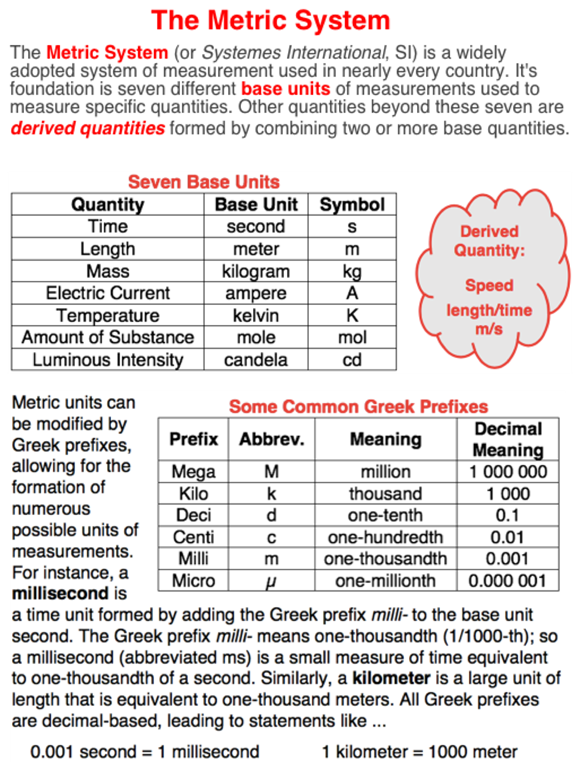Metric units of measurements like meter, liter, and gram are often preceeded by Greek prefixes such as milli-, centi-, and kilo-. These are just three of the many prefixes used to modify the base unit of meter, liter, or gram. An understanding of their meaning allows a student to comfortably use the metric system and to perform conversions from one unit to another.
Hold down the T key for 3 seconds to activate the audio accessibility mode, at which point you can click the K key to pause and resume audio. Useful for the Check Your Understanding and See Answers.
Metric System - help2
There are three similar questions in this Question Group. Each version includes the use of the centi- prefix. One of the three versions is shown below.
Version 1:
Complete the following statements.
Metric units often used Greek prefixes. The Greek prefix centimeans _________.
one-millionth (1/1000000-th)
one-thousandth (1/1000-th)
one-hundredth (1/100-th)
one-tenth (1/10-th)
ten (10)
one-hundred (100)
one-thousand (1000)
So if an object measures to be 20 centimeters in length, then it is equivalent to ________ of a meter.
20/1000000-th
20/1000-th
20/100-th
20/10-th
20 * 10
20 * 100
20 * 1000
That is ...
20 centimeter = _______________ meter

